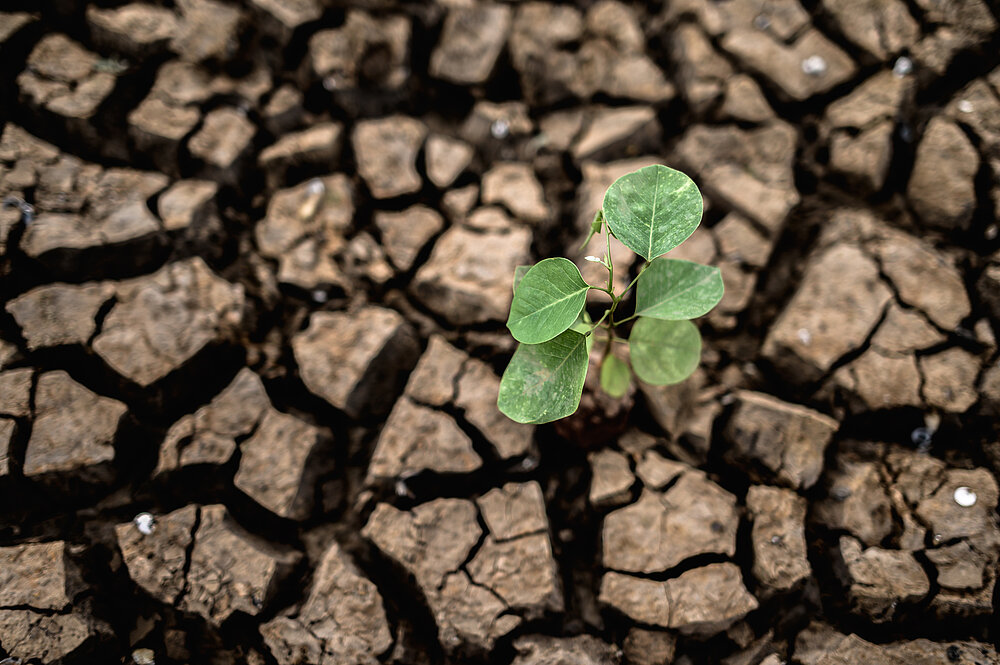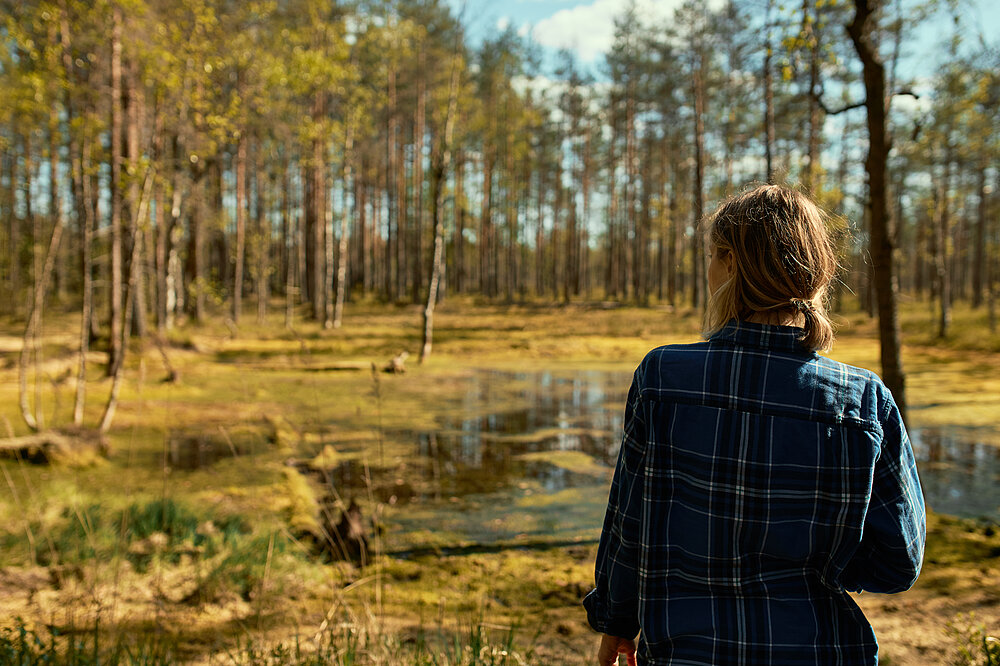Local strategies
Climate-friendly plants

The average concentration of carbon dioxide in the atmosphere in 2021, was 419 parts per million, estimated to be the highest concentration in the last 800,000 years. Several factors are responsible for this, including industry, deforestation, and rapid urbanization. Such a high concentration of carbon dioxide has a negative impact on the entire biosphere.
A natural approach to lowering atmospheric CO2 concentrations is to absorb CO2 from the atmosphere through the process of photosynthesis, which occurs in plants, algae and cyanobacteria.
"That's why one important approach may be to cultivate plants that are particularly strong in storing CO2, so that we can still increase the storage of CO2 despite the fact that forest areas are shrinking worldwide." (1)
For this purpose, a short excursion into the plant kingdom will help to better understand the important aspects of CO2 conversion in plants for this topic.
Not all plants perform photosynthesis, which is vital for us, in the same way. Adapted to the respective climatic conditions at their location, different plants have developed different photosynthetic pathways. The central difference lies in the way CO2 is bound in the plant cells.
90 % of all plants belong to the so-called C3 plants. These include, for example, the potato, trees, soybeans, rice and wheat.
Three percent of plants are referred to as C4 plants, such as those from the spurge family, corn and amaranth.
The remaining seven percent are called CAM plants. These are mainly plants from subtropical and tropical areas, such as cacti, orchids and the pineapple.
RuBisCo (ribulose-1,5-bisphosphate carboxylase/oxygenase) is the enzyme responsible for fixing CO2 during oxygenic photosynthesis in plants and bacteria. At this point, CO2 enters the metabolic cycle of the plant and can thus be converted into glucose and oxygen in the course of photosynthesis together with light and water.
CO2 fixation by RuBisCo has a central downside: RuBisCo can not only fix carbon dioxide, but also oxygen. Unlike C3 plants, C4 and CAM plants have evolved mechanisms to avoid binding oxygen to RuBisCo, the so-called oxygenase activity of the enzyme. Although the binding of oxygen to RuBisCo has no direct negative effect, the occupation of the binding sites prevents CO2 from being converted by the enzyme during this time. Consequently, the binding of O2 to RuBisCo is a process that restricts plant growth and is energetically ineffective.
As part of the "Climate-friendly plants" project, we are trying to reprogram C3 plants in such a way that the binding of oxygen to RuBisCo is reduced and consequently more CO2 is converted in the plant cells.
As part of the project "Climate-friendly plants", bioinformaticians at the University of Würzburg are trying, among other things, to reprogram C3 plants in such a way that the binding of oxygen to RuBisCo is reduced and consequently more CO2 is converted in the plant cells and stored as biomass.
In this project, several already published synthetic models were optimised. Combining the CETCH cycle and alternative photosynthesis III with blocking the PLGG1 receptor, which suppresses Rubisco oxygenase activity and dramatically reduces the flux of metabolites into peroxisomes and increases those enzymes important for photosynthesis, resulting in faster and more efficient CO2 uptake. (2)
This can be achieved by artificially recreating the involved metabolic pathways in the plant on the computer, then optimising them and finally transferring them into living plant cells.
Renaturalize peatlands

That forests serve as an important carbon store and are therefore particularly worthy of protection is commonly known. Another equally important natural area, however, is far less often the focus of discussion, "although in terms of its function as a carbon store, it even outstrips forests in terms of efficiency." (1) Drainage and degradation of peatlands for land reclamation and peat cutting, releases drastic amounts of climate gases. "More than 95% of Germany's peatlands are now no longer in their original state or have completely disappeared," as written in a 2021 Green Party position paper (2). It also states that about 8 million cubic meters of peat are processed annually as substrate for domestic horticulture and export. Consequently, a conversion to a climate-friendly land use of peatlands, the protection and renaturation of peatlands is of utmost interest for climate protection reasons.
An important approach is the protection of peatlands at the community level, since peatlands are often distributed over small areas in many districts in Bavaria (2). Support programs should serve as an incentive for communities.
In addition, an important contribution can be to communicate the importance of peatland protection through educational measures. In general, being informed about an important topic and thus entering into discussion with others is often an underestimated contribution.
By developing and switching to climate-friendly attractive alternatives, the use of peatlands can be made climate-friendly. One approach to this is to use peatlands as paludiculture, which is the cultivation of plants in watered-down peatlands. "A traditional example of this is the cultivation of reeds for roof reeds." (3) Of key importance is the cultivation of peat mosses as a peat substitute for growing media, since its extraction is the main reason for peatland degradation.
Other important contributions on the private level could be the promotion and personnel support of projects for the renaturation of peatlands, as well as the election of parties that advocate the protection of peatlands.
Literature on climate-friendly plants
2. Download link for the more detailed presentation: Elena Bencúrová. Establishing climate-friendly plants from Würzburg to Abu Dhabi. University of Würzburg, Department of bioinformatics. last accessed on: 09.02.2023
3. Muhammad Naseem, Özge Osmanoglu, Thomas Dandekar. Synthetic Rewiring of Plant CO2 Sequestration Galvanizes Plant Biomass Production. Cellpress reviews, April 2020. last accessed on: 09.02.2023
4. Television report from 3sat: Retten Super-Pflanzen unser Klima. Starring Thomas Dandekar und Elena Bencurova from Chair of Bioinformatics Würzburg, 17.06.2020. last accessed on: 09.02.2023
Literature on renaturalize peatlands
1. Marina Weishaupt. Warum Moore die besseren Wälder sind, National Geographic. 16.05.2022. last accessed on: 07.12.2022
2. Bündnis 90 Die Grünen, Landtag Bayern. Positionspapier Unser Wasser – Erhalten, was uns erhält. 23.09.2021. last accessed on: 07.12.2022
3. Bundesministerium für Ernährung und Landwirtschaft. Forschungsprojekt: MOOSWEIT/MOOSzucht – Torfmoose als Torfersatz. last accessed on: 07.12.2022
4. Bundesamt für Naturschutz. Paludikultur. last accessed on: 07.12.2022







